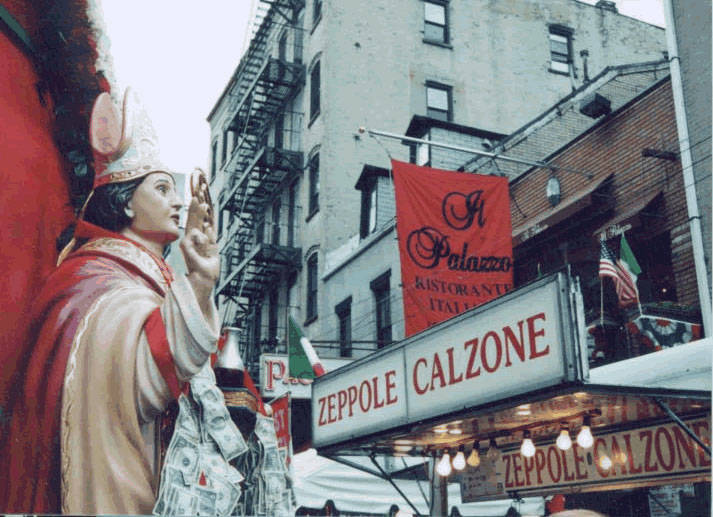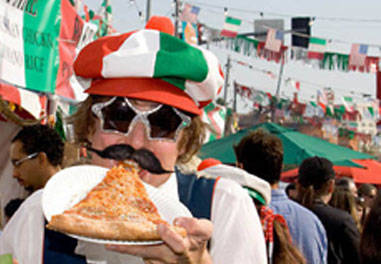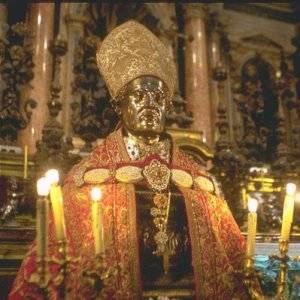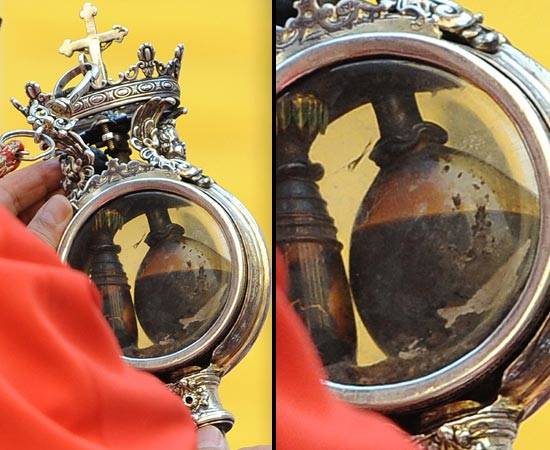Feast of Saint Gennaro. What it Is, and What it Should Be
Walking around Soho today I met a couple of tourists who asked me directions to Mulberry Street, where the Feast of San Gennaro was taking place. I asked them why they were so curious about it - being them English - and they answered that friends had told them to go there “to have a nice Italian sausage and zeppole at one of the kiosks set up for the occasion”.
At this point I asked them if they knew anything about the feast and the reason why September 19 is celebrated so glamorously down in Manhattan’s Little Italy.
Their... silence... encouraged me to give them a brief but essential “history lesson”.
I have some reasons to believe that my tourists are not the only people who do not know much on the matter. Might them be 2, 3, hundreds, or thousands, I feel it to be my duty to fulfill this little gap.
Most Italian-Americans or Italians living in the city lament that the Feast of San Gennaro is everything but what the “authentic one” used to be, or what it should be. I must say that as a “Neapolitan-American” I agree with them. I challenge you to find one only Italian, or American with Italian ancestries, cooking and selling food and souvenirs along Mulberry Street during the celebrations. Fried Oreos, candied apples, and meters-long sausages... you could never find this stuff in Naples. People taking pictures with a portrait of Marlon Brando playing in the Godfather show how this feast has kind of become a hymn to commercialism and stereotypes.
However, regardless of these few and obvious considerations on what has now come to be a sort of Luna Park for tourists, it is still true that the San Gennaro Feast is the biggest, most famous and longest running religious festival in the history of the city of New York.
Today at its 84th edition, the Feast was instituted in September 19, 1926 when newly arrived immigrants from Naples settled in Mulberry Street in the Little Italy section of New York City and brought with them the tradition to celebrate the day when Saint Gennaro was martyred for his faith, September 19 305 A.D. The feast goes on for 11 days - this year in particular it started on September 16 and will end on the 26th. The death of the martyr is commemorated with a procession that brings the statue of the Saint all around Little Italy. On the other days, the statue is exposed at the entrance of the main church of the neighborhood, as faithfuls make donations in money or jewels - as a sign of devotion.
Saint Gennaro is the “greatest” saint patron of the city of Naples, and is venerated together with other 51 co-patrons. There is not any historic documentation on his life and death: all we know about him has been handed down to us by hagiographies written between the VI and the XIX century AD.
The circumstances in which he was killed, and the consequences of his death, are so peculiar and interesting that I think it is worth it for you readers to take five minutes of your time and read what I am about to write.
According to the sources I just cited, Saint Gennaro, bishop of Benevento, decided to leave for Pozzuoli and visit the local faithfuls. As he was arriving to destination a friend of him, the deacon of Miseno Ossio - a small town nearby, - who had decided to join him, was arrested by the soldiers of the governor of Campania, Dragonzio, famous for his hatred against Christians. As he was paying visit to his friend in prison, Gennaro was arrested too and the two of them were condemned to be tiered to pieces by bears in the amphitheatre of Pozzuoli. The sentence was then changed to decapitation.
According to the tradition, after the beheading a woman called Eusebia kept some of the bishop’s blood.
That blood is today preserved in two cruets in the Cathedral of Naples. The bones of the Saint are kept there since the XVII century, when Neapolitans built the Cappella del Tesoro di San Gennaro (Chapel of the Treasury of Saint Gennaro) as a tribute to their patron saint who had freed them from the plague.
From that time on and still nowadays, while in Mulberry Street the feast goes on starting several days before the anniversary of the martyrdom, the city and the residences of Naples wait for "Saint Gennaro to make the miracle" on September 19 bated breath. No street fair takes place, nothing glamorous happens. It is just a religious moment.
If San Gennaro “makes the miracle”, or in other words, if his blood melts, it is a good omen. Otherwise, it means that the Saint is "upset" with/for the city.
Saint Gennaro’s first miracle happened in 1389, and now it repeats three times a year: the Saturday before the first Sunday of May or in the following eight days, on September 19, and on December 16, on the anniversary of a catastrophic eruption of the volcano Vesuvio.
Science has been trying to give an explanation to such an event since centuries. Astro-physich Margherita Hack has recently declared "The miracle of the blood of Saint Gennaro is only a chemical reaction.” Many were the researchers who echoed her, including those of the CICAP (Comitato Italiano per il Controllo delle Affermazioni sul Paranormali - Italian Committee for the Investigation of Claims on the Paranormal) who demonstrated that melting of the blood was something science could analyze and explain.
After Council Vatican II, moreover, the Church decided to “delete” some saints from the calendar. Among them was Saint Gennaro. It was the harsh reaction of the people of Naples that stopped the de-sanctification of Gennaro. Their faith is so strong that they have no eyes or ears for the claims of scientists and researchers; they just fill the cathedral on the appointed date and pray the saint to make the miracle.
Today, September 19 2010, the miracle happened at 9:22 am Italian time. It is a bad moment for Naples: poverty and crime dominate the city like a permanent fog. Despite of the joy of the worshippers at the sight of the melted blood, Archbishop Sepe gave a very pessimistic speech. “Naples has always lived of bread and hope. We are now at a turning point: nothing must be given for granted, nor the bread or the hope. How could this happen?”. The miracle of Saint Gennaro was not a good omen this time. Sepe himself tried to send a message: the patron alone cannot change the situation.
My English tourists left me knowing a bit more of the Feast they were going to take part to. I am sure that they had their sausage, cannoli, and zeppole, but at least when they saw the statue of the Saint, they KNEW what they were looking at.
The feast of Mulberry Street is what it is today, but it represents a huge act of faith of a group of Neapolitan immigrants who came here at the beginning of the XX century. Even if the Church itself has some doubts in defining the melting of the blood of Saint Gennaro a miracle, the faith and devotion showed by Naples and its citizens towards its saint patron is admirable in one way.
If you stop by Mulberry Street during these days of celebrations, just think about it. Remember that there is a “almost hidden” side of this feast that deserves huge respect, for its historical, sociological, and anthropological meaning








































i-Italy
Facebook
Google+
This work may not be reproduced, in whole or in part, without prior written permission.
Questo lavoro non può essere riprodotto, in tutto o in parte, senza permesso scritto.